If you’re looking for a heart-pumping Colorado Springs hike that will reward you with breathtaking views of the city and beyond, make plans to visit the Manitou Incline. This incredibly popular hiking trail begins at the base of Pikes Peak in the quaint mountain town of Manitou Springs. From the first railroad tie to the last it’s only .95 miles, but it’s super steep—it gains a whopping 1,912 feet and has 2,768 steps (according to a plaque on the last step)! Once you reach the top, you’ll feel like you’re on top of the world. (And it’s free with a reservation.)
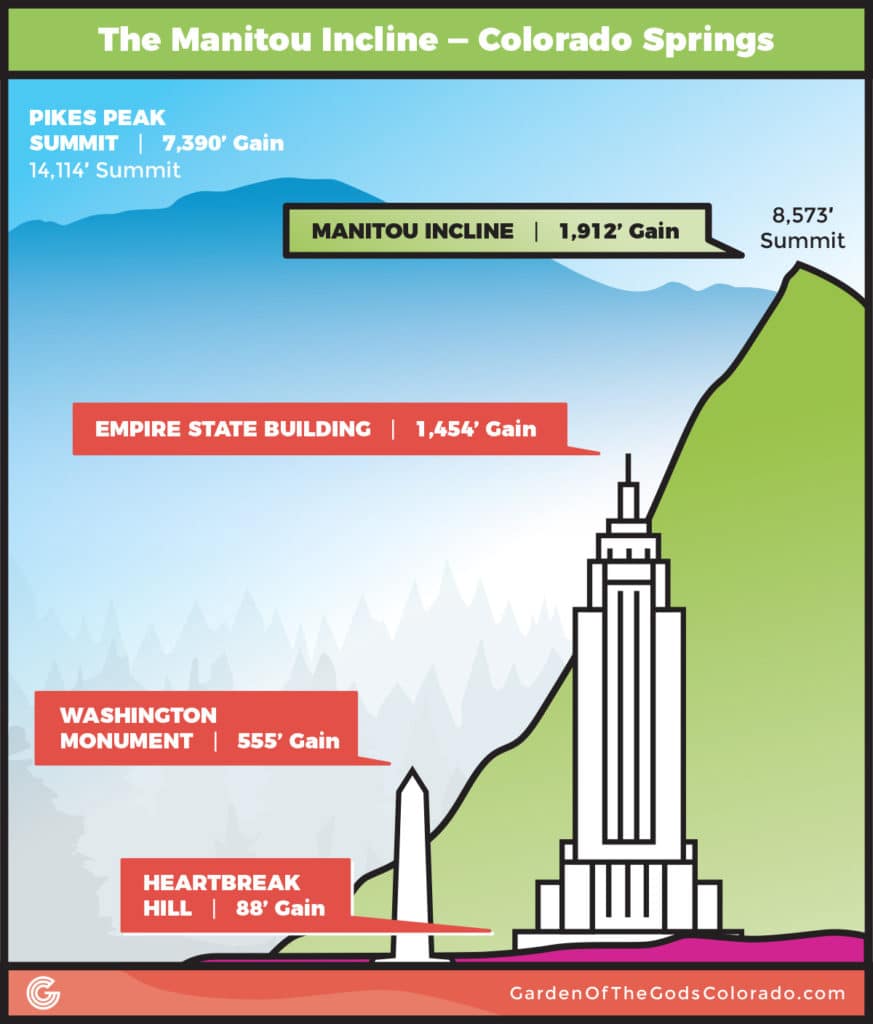
Locals from the Colorado Springs area as well as visitors from around the world love climbing the Incline — one of the premiere trails in Colorado. It attracts everyone from weekend warriors to marathon enthusiasts to world-class athletes. Since the U.S. Olympic Training Center is close by, many Olympic athletes train on the Incline. So do professional athletes—in early 2017, NFL player Brandon Marshall traveled south from the land of the Denver Broncos to climb the Incline. No word on how fast he took to get to the top, but in posting a selfie from the top on Twitter, he called it a “beast”!
Manitou incline was a beast!
— Brandon Marshall (@BMarshh54) April 8, 2017
In the late summer of 2019, legendary mountain endurance athlete Kilian Jornet ascended the Incline one day before running, and winning, the Pikes Peak Marathon.
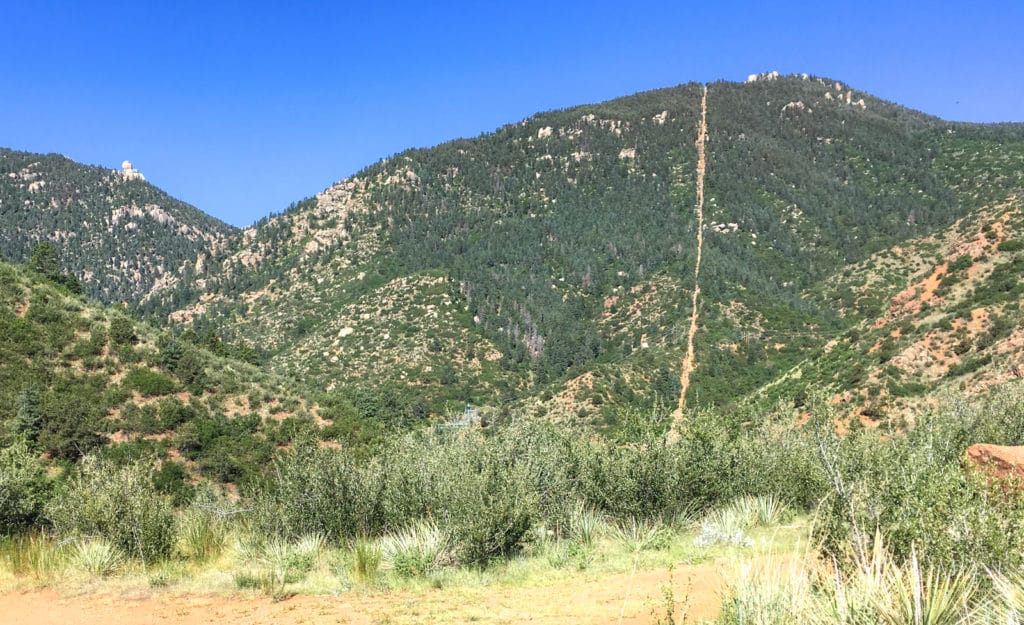
How Long Does It Take to Get to the Summit of the Incline?
Your pace ascending the Incline depends on your fitness level, of course, but if you’re very physically fit, you might be able to make it in 30 minutes. A lot of people take an hour. The record for getting to the summit the fastest seems to be up for debate, but Joseph Gray, a member of the U.S. Mountain Running Team, reached it in 17 minutes 45 seconds in 2015. 2023 update: Remi Bonnet resets the Manitou Incline record to 17:11!
If you are interested in timing yourself, start your watch at the first railroad tie, and stop it at the last railroad tie. This is what locals consider official.
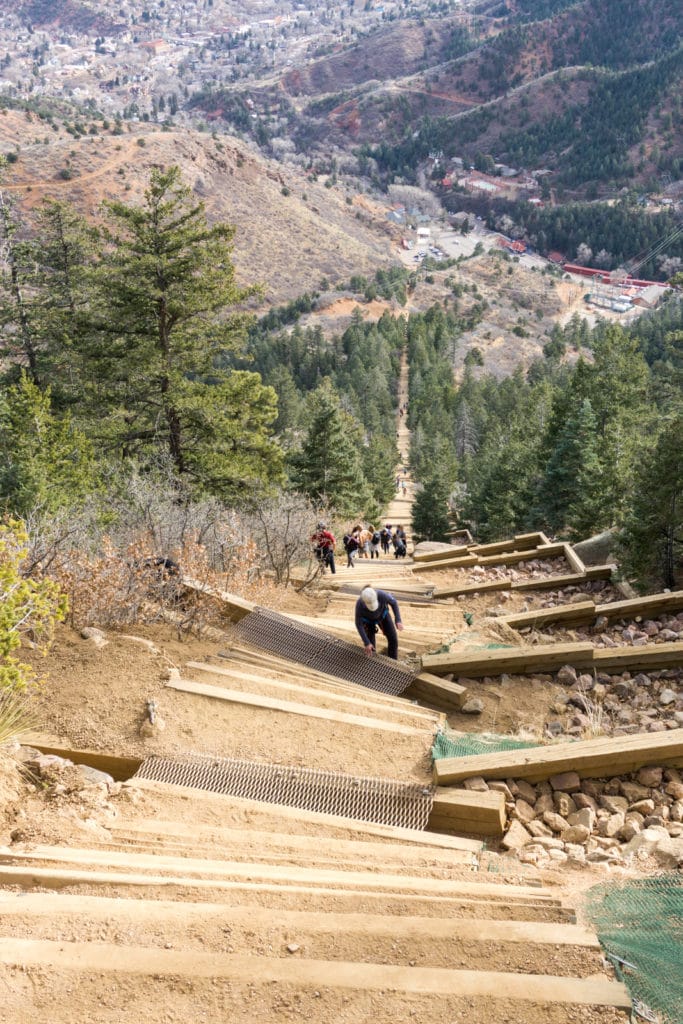
Who Should (and Shouldn’t) Climb the Incline?
Anyone can climb the Incline, but it isn’t recommended for people with serious health issues or low fitness levels. If you’re coming from a lower elevation, the high altitude (over 6,000 feet) makes the climb even tougher. And before you hit the trailhead, make sure you’re prepared: bring plenty—PLENTY—of water. Protect yourself from the sun with sunglasses, sunscreen, etc. And wear proper shoes. Yes, I’ve seen newbies hiking on Colorado Springs trails—even scrambling across steep, slippery boulders—in FLIP FLOPS. (That did not look fun.)
On your way up, you’ll notice a “bail out” trail on the left, which branches off to Barr Trail, a trail that goes to the top of Pikes Peak. Keep going; some of the hardest climbing is behind you! Of course, listen to your body too — there’s no shame in being smart.
It should also be noted: what looks like the top from below is a false summit. When you reach that first patch of sky, you’re not at the summit yet; you have a few hundred steps to go! Once you do reach the top, you’ll head back down via Barr Trail using the nice new connector trail on the left. Walking down the Incline steps is a no-no. Also off-limits: pets.
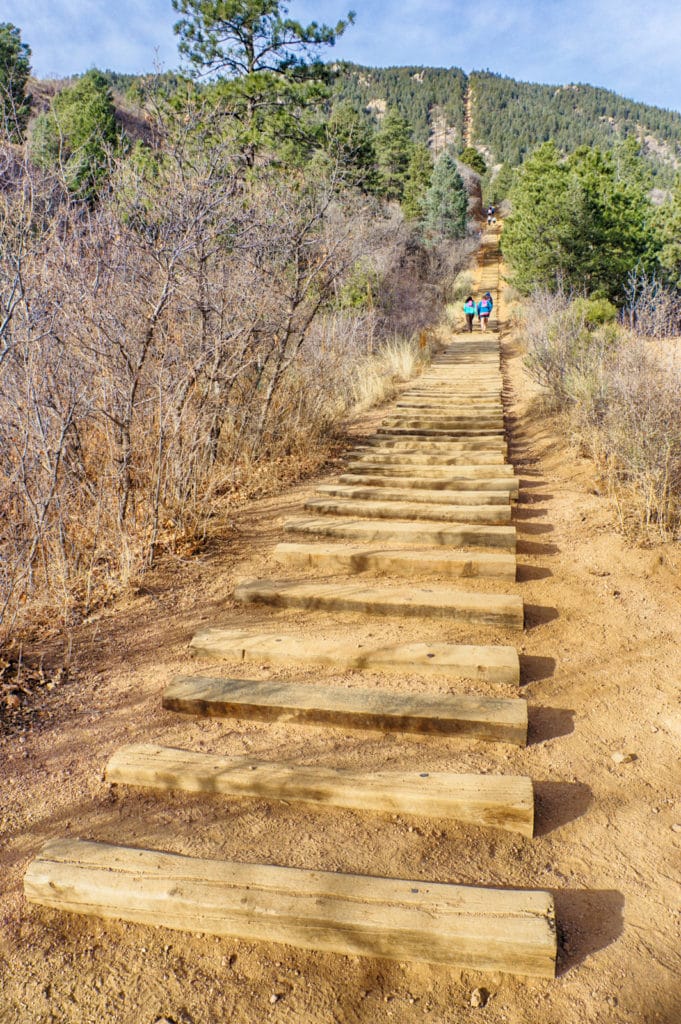
History of the Incline
The Incline actually got its start as a cable railway. It was built in 1907 and first used to carry supplies up Pikes Peak to build a water system down the mountain. But that didn’t last long, and in a few years the railway turned into a tourist attraction carrying visitors to the summit on Mount Manitou. When the railway closed in 1990, the train rails were removed, but the railroad ties remained—making the perfect staircase for hikers to climb.
One small detail: it wasn’t legal. The Incline isn’t on public land. Actually, three entities own it, with the Pikes Peak Cog Railway owning the middle third. By the late 90s, the Cog Railway started putting up “No Trespassing” signs, partly because it didn’t want hikers taking up railway parking spots and partly because it didn’t want to shoulder any liability. But the popularity of the Incline kept growing, and hikers tore the signs down.
Years of discussions and legal wrangling ensued, but finally, government officials hammered out an agreement. And Feb. 1, 2013, at 7:05 a.m., it finally became legal to huff and puff all the way up to 8,573 feet. Though the Incline did close from August to December in 2014, 2016, and 2017 for much-needed repairs and improvements.
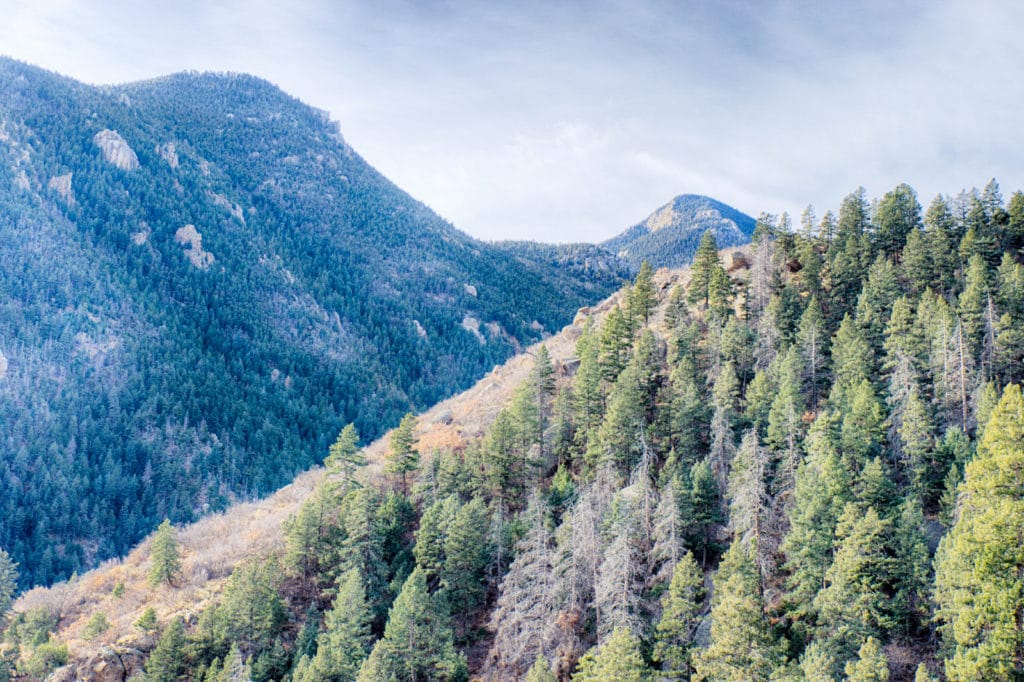
Manitou Springs Incline : Details and Directions
The popularity of the Incline, especially on the weekends, makes it a little tricky to reach the trailhead. Nearby parking is very, VERY limited. A spot in the Barr Trail parking lot costs $20 a day and requires a reservation. The Iron Springs Chateau offers 50 spaces at $5 for four hours. Parking along Ruxton Avenue costs $10 an hour on weekdays, but on weekends, many spots are reserved for people who live on the street. Be cautious about parking on the streets of Manitou for that reason. If you see a “No Parking” sign, heed the warning or else you’ll probably get a ticket. (I speak from experience.) For a much cheaper and less stressful option, park in Manitou Springs’ free public parking lot at 10 Old Man’s Trail (Memorial Park) and take the free shuttle to the trailhead. The ride only lasts a few minutes. However you get there, don’t forget — the Manitiou Incline requires a free reservation.
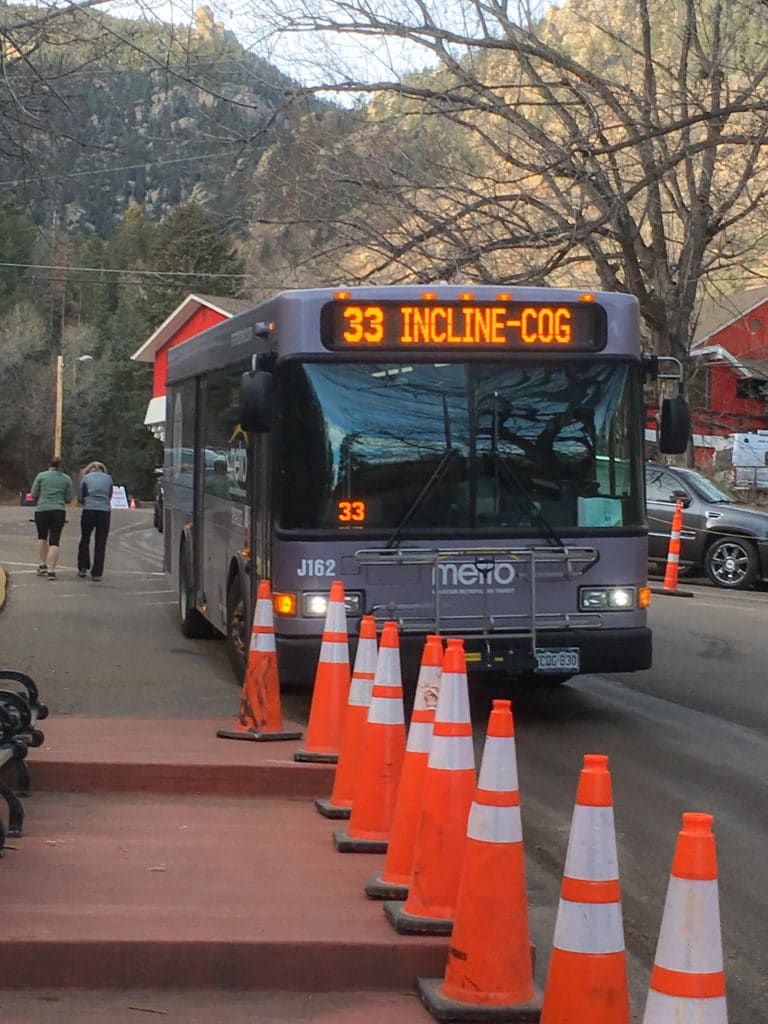
To reach the Incline from Colorado Springs, head west on U.S. 24 and exit at Manitou Avenue. Then drive west on Manitou Avenue until you reach the roundabout in front of The Loop restaurant and The Mountain Man store. From there, go north on Ruxton Avenue. The Incline trailhead is behind the Cog Railway parking lot.
The Incline is open from dawn to dusk, no matter the weather. Locals do climb the Incline in winter, but the steps can get pretty icy, so make sure you’re wearing the proper attire and footwear. Hiking traction devices like Kahtoola Microspikes, Nanospikes, or Yak Trax can help prevent a slippery fall.
Try the Incline!
Why not give it a try? Even if you don’t make it to the top and decide to head back down at the “Barr Trail Bailout,” you’ll experience the camaraderie and encouragement of other hikers on the trail. Bring a friend with you. And be sure to take pictures and share them online—you definitely want people to know you “did the Incline.”
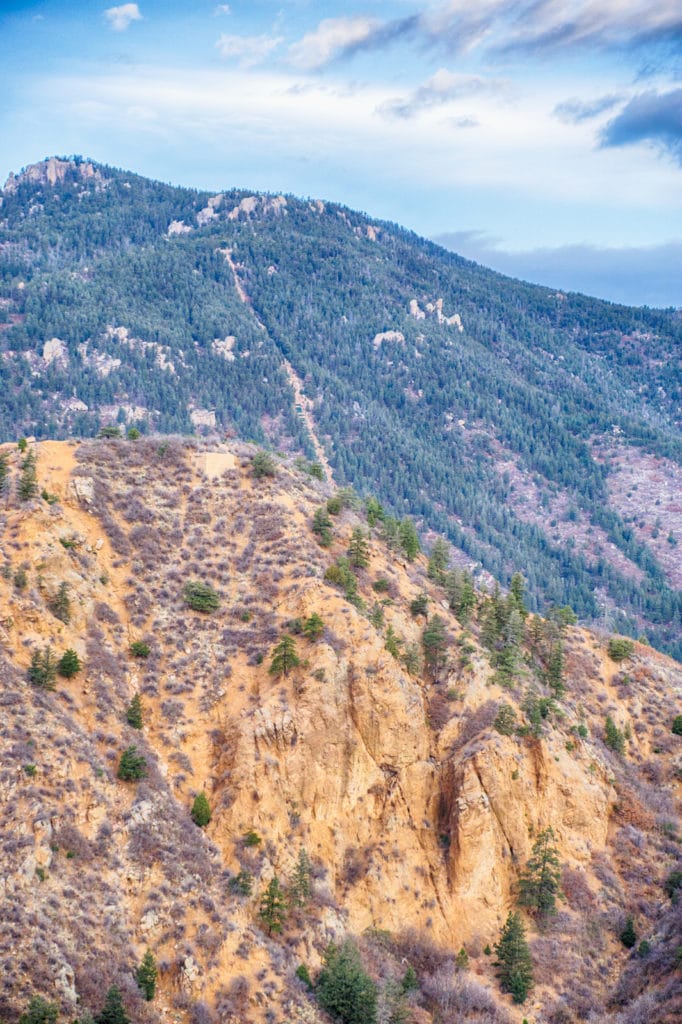
Source of elevation gain: Brian’s GPS watch. There are varying accounts on the elevation and distance of the Incline, but everyone can agree: it’s about 2,000 feet of elevation gain over ~.9 miles. We measured from the first railroad tie to the last.